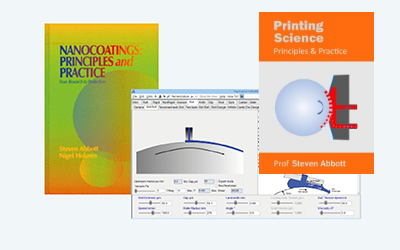Distribution Calculations
Quick Start
A supplier can legitimately give you four different values for the size of your nanoparticles. As a customer, you had better understand what the values mean and which one is most important to you.
So create your own distribution by varying the position, height and width of two components in your product, and see how they affect the different measures of particle size.
Distribution
A nanoparticle supplier can honestly tell you that their product contains 99% particles <10nm, but you can find that the product comprises 99% of 1000nm particles: why? This can arise if the supplier quotes "number distribution" (which suppliers like to do because it makes their dispersions look very good) and you measure "mass distribution" which focuses on where most of the mass of your particles is to be found.
This doesn't make much sense unless you can simulate some particle distributions and look at the cumulative number, area and mass distributions. In this app you can create two different particle distributions with different peak positions, r, heights, h, and widths, w, then look at the cumulative number, area and mass distributions (Cum.N, Cum.A and Cum.M). The peaks are normal distributions for simplicity and clarity. Once you start to play you will find why suppliers like number distributions and users like mass distributions.
The app calculates the different diameters that are often quoted. D[1,0] is the number average (or mean), D[3,2] is the volume/surface or Sauter average and D[4,3] is the mean diameter over volume or DeBroukere mean. Note that these are sometimes shown as D̅10, D̅32 and D̅43, where the ̅ symbol means "average". Unfortunately these short-hands with the bar can be confused with common symbols such as D50 which is also calculated. D50 means the diameter where half the particles have a volume less and half have a volume more. Steepness is 100xD30/D70.
In rheology, volume fraction is a key parameter. But it is important to realise that surface area influences particle-particle interactions and the number of particles and their radii influence yield stress etc. As an indication of how the area and number values differ from the volume-based values, D[4,3]/D[1,0] and D[4,3]/D[3,2] are calculated, with larger values indicating bigger deviations.
Log Normal Distributions
Different methods of making particles, and different fracture patterns of particles tend to produce different size distributions. Some are normal, some are log normal, some are Weibull etc. When the log normal option is chosen the distribution changes and the scale changes to log, so the curves look symmetrical. The "Width" parameters for the peaks are meaningful for the normal distribution but not for the log normal. Treat them as rather arbitrary parameters that give you a distribution that appeals to you.


